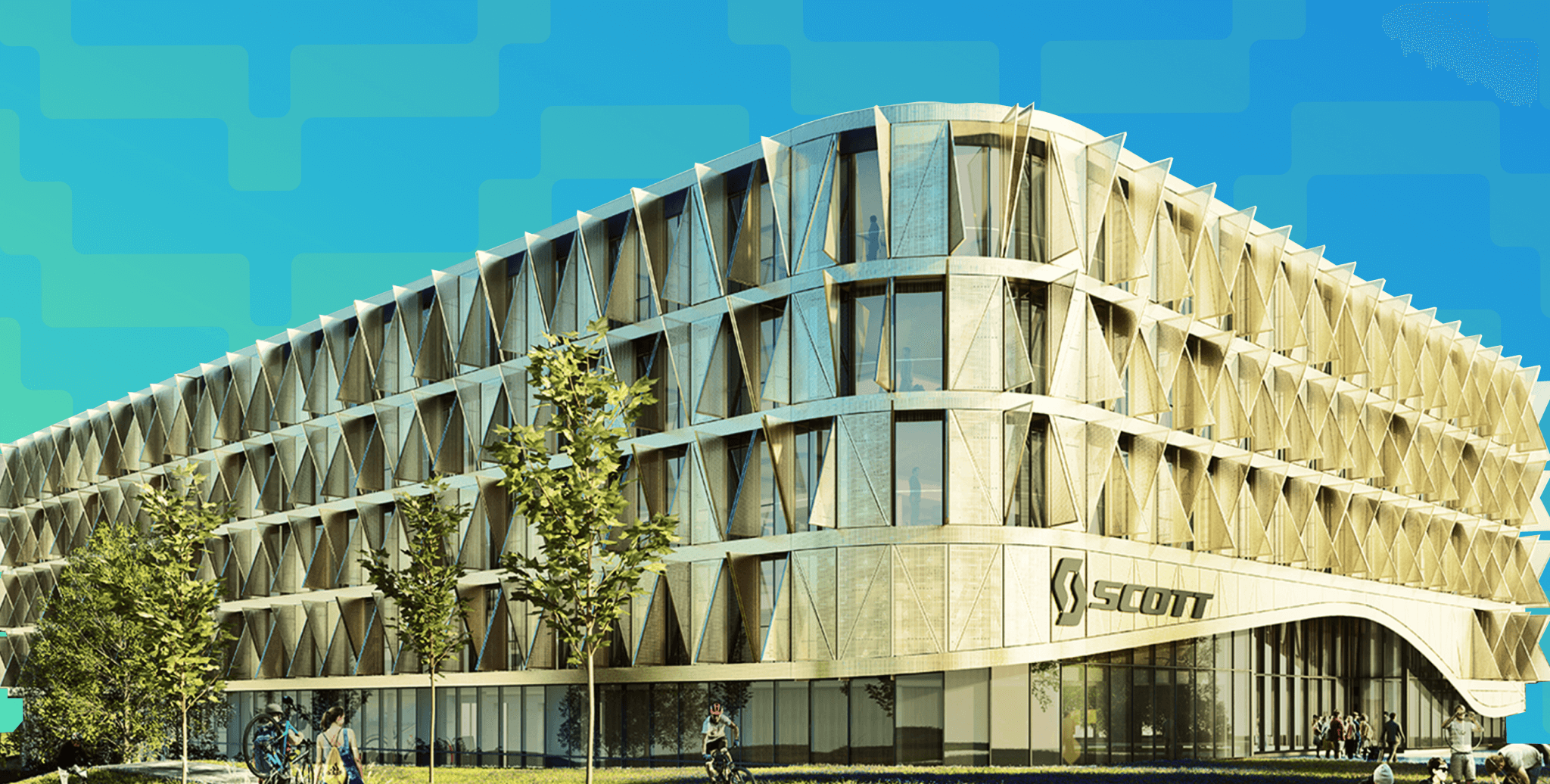The Digital Tsunami Has Hit AEC and There's Nowhere Left to Hide
-2.png)
Table of Contents
“Tech is Dynamic and change is the only constant”
BIM Software Market Summary 2023-2030: The global BIM Software market size was valued at USD 11333.33 million in 2022 and is expected to expand at a CAGR of 16.2% during the forecast period, reaching USD 27906.19 million by 2028.
As we repeatedly transition to contemporary technologies, the advancement over millennia is suggestive of the accuracy of adoption, and the hyperbolic curve of continuous growth. While we are gradually stepping into the realm of adopting tech-first practices, another metamorphosis awaits in 2030. We are surrounded by technological developments that will circumscribe the global map of industries.
Where does that leave us as AEC business owners, professionals, or even students?
A fallow field where the traditional goes obsolete, and the only way to navigate is to disrupt – to rethink, recalibrate, adapt, and evolve.
We recently witnessed a pivotal drift when the global pandemic, Covid-19 hit us. Feeling challenged by traditional methods and practices, we turned to technology (even for the most basic, everyday tasks.) We adopted cloud collaboration, utilised data analysis, digital platforms, and the list goes on…
While many industries are actively adopting the tech arsenal, the Architecture, Engineering, and Construction (AEC) industry is still lagging behind. Even today, it is the 2nd least digitised industry with only the agricultural industry beating it in the race.
This is something to chew over and accept that it is time to be better – turn to better things, adopt better practices, and bring change.
There’s only one question, WHEN??
Innovate or Stagnate: Why Tech Skills are the Life Raft for Architects?
With the ever-increasing demand for urban infrastructure, the need to build right and efficiently has become crucial. Coupled with this rising demand for urban infrastructure is the unprecedented climate change providing the impetus to move toward sustainable and green building. But while we engage and fuel conversations about adopting technology, shifting towards the right technology is crucial.
What the AEC industry needs is a digital transformation and an integrated technology right from the foundation.
By integrating digitised processes across interlinked construction phases, from design to maintenance, AEC professionals embrace holistic digitisation and stay current with industry updates.
As the AEC industry evolves with the coming in of new technologies, one thing is crystal clear – if we don’t adapt now, we will be left behind – both as an industry and professionals. Being an early adopter is no longer a matter of luxury or choice. It’s an absolute imperative!
Enter Building Information Modelling or BIM - The Digital Mindset.
Also Read: BIM Metamorphosis - A Paradigm Shift in the AEC Industry
BIM is not just revolutionising the infrastructural landscape. It can also be credited for the underwave of radical shifts in each AEC professional’s career trajectory.
Don’t believe us?
Read on and you’ll change your stance for good!
“For the first few days, you’ll barely notice it. You might even feel like a huge weight has been lifted... but then it will start to get you"
- Fred Mills, B1M Founder on BIM and adopting digitisation in the AEC industry

Not learning the right technology now WILL limit your future opportunities as an architect. In this cut-throat world of always looking for the better, where would you stand? Mediocrity has no currency in the age of brilliance! How would you keep up with futuristic skills if you’d let today's learning gaps become your career’s stumbling blocks?
Major infrastructure projects are expected to transition to BIM
“We’ve seen the future, and it’s built around BIM”
BIM or Building Information Modelling or Building Information Management is not merely a system - it’s a visionary force that is shaping the AEC landscape. BIM creates a collaborative medium that allows professionals in the AEC industry to design, build, operate, and maintain within a single 3D model.
In the realm of BIM, we, as AEC professionals are the orchestrators of a revolution- a transformation where innovation is collaborating with ideas, and bridging the gap of inefficiency, communication, and digitisation. BIM is a stroke on the canvas of the ever-evolving AEC industry, and if you don't learn to stroke, you can’t paint yourself a masterpiece!

The Future of BIM? Building Limitless

The BIM mindset and the need to adopt these methodical processes are becoming crucial, and eluding this is out of the question.
The right question to ask here is, WHY NOW?
Global spending on digital transformation is expected to hit $3.4 trillion by 2026, and given below are some data points amplifying the same.

We are looking at tech-first practices becoming the brick-and-mortar of the AEC industry not only because of the tech shift. There’s a much bigger picture to discern.
Sustainability, Efficient Construction and Collaboration are the future, and BIM is the Anchor
In the face of escalating demand for urban expansion, the imperative to design infrastructure and create built environments has never been more pressing. Inefficient planning not only jeopardises promptness in the industry but also renders cities functionally incapacitated.
Seizing transformative urban development is paramount, and the only time is NOW!
Fact: The construction industry contributes to 37% of carbon emissions, globally.
80% of AEC professionals feel that sustainability is crucial in architecture now.
The solution? Dare, disrupt, and adopt BIM and evolve in the way we design and build.
AEC professionals stand as the vanguard of infrastructure development. We are witnessing a paradigm shift in the way we are building. Now, more than ever, we must not only identify the urgency of adopting sustainable and efficient building but also seize the opportunity to build a future that defies any challenges that may dawn on us in the future. If sustainability is the ship that we are sailing in, then BIM is steering and navigating us through every storm. The future of AEC lies in the integration of technologies like BIM and skilled professionals, enabling the transformation and realisation of visionary construction projects.
BIM is revolutionising project lifecycles by slashing waste, maximising resources, and forging energy-efficient, environmentally conscious masterpieces. From curbing greenhouse emissions to championing sustainable materials,
BIM doesn't just build structures; it is crafting a legacy of minimal waste and maximal impact.
Fact: A recent McKinsey report found that 80% of average cost overruns come from change orders.
Out of all the construction firms using BIM processes, 63% of firms are using BIM to facilitate better collaboration.
As AEC professionals, we thrive on collaboration and the symphony of creativity and innovation. Collaboration is not a mere transaction, but it propels us beyond conventional boundaries, creating and building structures together for the future. To collaborate is to dare, and deliver beyond constraints. As we continue to march forward, collaborating efficiently is going to extend our thoughts, build better, and design efficiently. The AEC industry is searching for the spark that ignites a revolution, the ripple that transforms a tide - The Disruptor.
BIM enables the creation of a single integrated model that is open to collaboration and helps teams find and share relevant data. A workflow like this helps in efficient collaboration that leads to improved communication and reduced risks.
You Reap What You Sow
What does BIM bring to the table?

Also Read: Scope Of BIM in the Future and its Global Growth Rate
Looking at the numbers, it’s pretty evident that BIM is the best investment to make as an AEC professional. BIM’s capability to provide a comprehensive approach to project management is the most talked about globally. Capturing the attention of professionals worldwide, BIM is a pivotal tool for navigating the complexities of modern construction projects, and identifying its potential.
In a world where innovation propels forward-thinking, the widespread adoption of BIM stands as a testament to its undeniable impact on the forefront of the global construction landscape.
Part 1: Building with BIM
BIM has been advancing construction processes, optimising large-scale project workflows, and widening the scope of an AEC professional. Let’s discuss how we have built better, with BIM in our arsenal.
Case 1: University of Colorado, Denver Health Sciences Centre
This 11-storey bio-medical facility sprawls over an area of 540,000 sq ft with an anticipated budget of USD 201 million. How did BIM help?
- Reduced 74% of Construction Request for Information (RFI) during the initial foundation stage
- Reduced 47% of RFI during the reinforcement phase
- Achieved a 37% overall decrease in the coordination of RFI
- Achieved project delivery 2 months before the scheduled date
- Realised an estimated reduction of 50% in both labour and workflows
Case 2: Nagpur Metro Rail Project, India
Underlined as one of the major infrastructure projects in India, this project sprawls over 38.2 km across the city with 36 stations and 2 depots in construction. How was BIM helpful?
- Amplified cost savings by 12%, and this is expected to rise by 15%
- Anticipated overhead cost reduction by 5%
- Expected 8% of cost saving over DPR project costs
- Achieved overall cost savings of 10%. This rounds up to approximately INR 800 crore
Check out other impressive BIM projects globally.
Part 2: Career Building with BIM
In a world where every minute counts, learning BIM is a strategic advantage that sets you apart from the crowd. Think of it as the difference between a spectator and an on-field player. Using BIM has been helpful in many large-scale projects, and is an indispensable tool for skilled professionals. The urgency of upskilling with BIM lies in shaping a future where you become the cornerstone of creating impactful projects.
Now is the time to seize the moment, harness the power of BIM, see beyond tangible applications, and future-proof your career.
Traditional vs BIM professionals

An enhanced skill set makes you an indispensable recruit:
- BIM software proficiency is an invaluable technical skill. Once you learn to navigate and employ BIM, you can enhance your technical expertise, build versatility, and be prepared for the upcoming tech advancements and tools.
- AEC professionals working with BIM understand a project holistically. They have a better understanding of steering through a project lifecycle, from design to construction. This also helps in fostering interdisciplinary learning psychology.
Grow in your career and build better portfolios:
- Being proficient in BIM sets you apart from the crowd in this competitive job market. Employers always look for individuals who can leverage the latest technologies and deliver high-quality projects, irrespective of their scale, much more efficiently.
- Learning BIM will not only enhance your skills but will also elevate your portfolio. And we all know the thumb rule: The better the portfolio and projects, the better the opportunities.
- With BIM becoming an industry standard, professionals well-versed in its applications are better placed to take up leadership roles. Watch your career soar and advance seamlessly, with BIM in your arsenal.

Stay relevant, adapt, and future-proof your career. The clock is ticking!
- BIM is at the forefront of dynamic tech advancements in the AEC industry. Professionals who are equipping themselves with BIM are justifying their allegiance to staying relevant and adapting to the ever-evolving landscape of the AEC industry.
- We all have talked about Artificial Intelligence (AI) and machine learning taking over the skylines of industries. The ones skilled in BIM are all set to adapt to the integration of these emerging technologies and the ones that the decade awaits.
Work for anyone. From anywhere. Anytime:
- BIM Facilitates collaboration beyond geographical boundaries. BIM-skilled professionals can freely engage in global projects and work remotely, leveraging its collaborative workflows. This opens up a whole new world of possibilities and opportunities, expanding professional networks.
Unlearn, Relearn, and Adapt:
- The AEC industry is ever-evolving and keeps coming up with continuous software updates and improvements. Professionals skilled with BIM are already a part of the atom-shell structure with continuous learning, adapting to new features and functionalities, ready to take up new challenges and learn the upcoming techs.
Future of BIM
In this relentless sprint towards digital revolution, a seismic shift in the AEC industry is underway. The power of BIM lies in transforming the traditional to something better, uniting them in a symphony of making processes better, efficient and streamlined. The global BIM adoption advocates for its metamorphic character and the power of transmuting construction processes. BIM is the bedrock of reliability and is translating into this new age of making construction processes structured and streamlined.
In the coming years, the BIM adoption rates are anticipated to rise. With the growing population, the pressure to adopt coherent processes is intensifying to meet these demands. With the soaring exigency of using BIM and investing in tech-first practices, one thing is for sure. Disruption, and then the ultimate transformation.
In this landscape of relentless evolution, BIM isn’t just a skill. Look at it as your gateway to perpetual adaptability. While BIM has been a part of architectural innovation for some time, its indispensability has become apparent now. From methodical shapeshifting to upcoming tech adaptations, BIM places itself as the foundation of the AEC edifice.
We all are looking forward to building greater and designing better and delaying BIM today is akin to closing doors tomorrow.
Rewind, Re-evaluate and Rethink.
Can you disrupt this chain of action NOW, build something better today, so you get the best of tomorrow?
The only question to ask yourself is, Will you #DisruptForBetter Today?

 Thanks for connecting!
Thanks for connecting!

.png)


-1.png)



